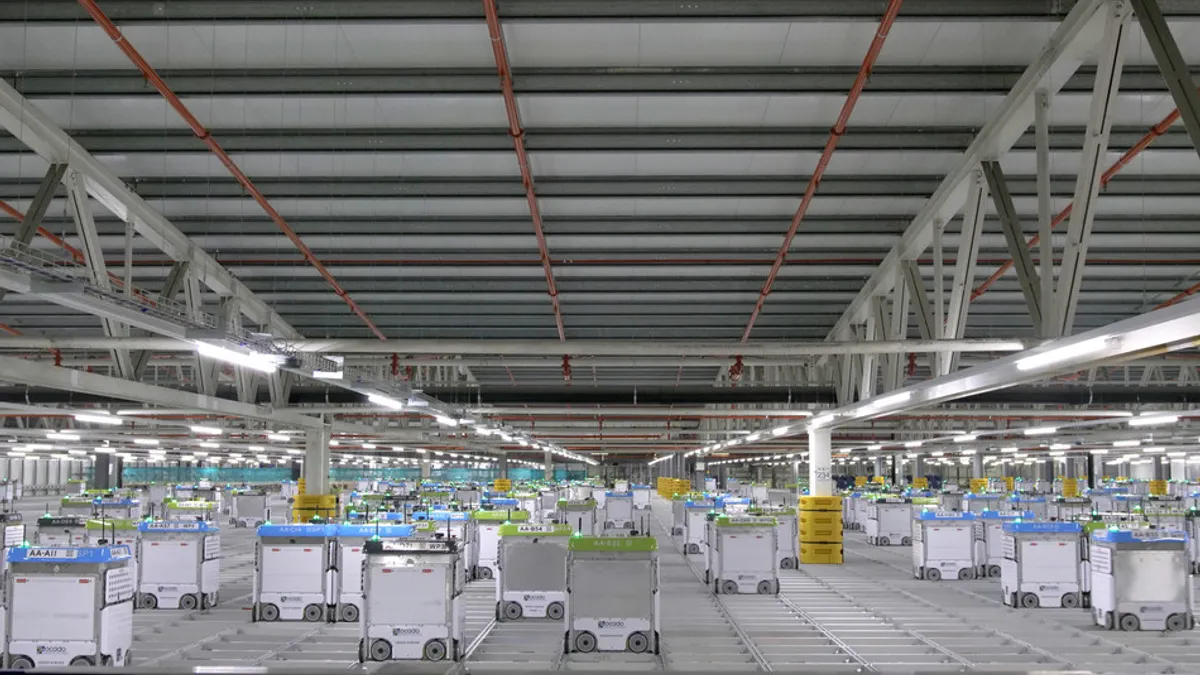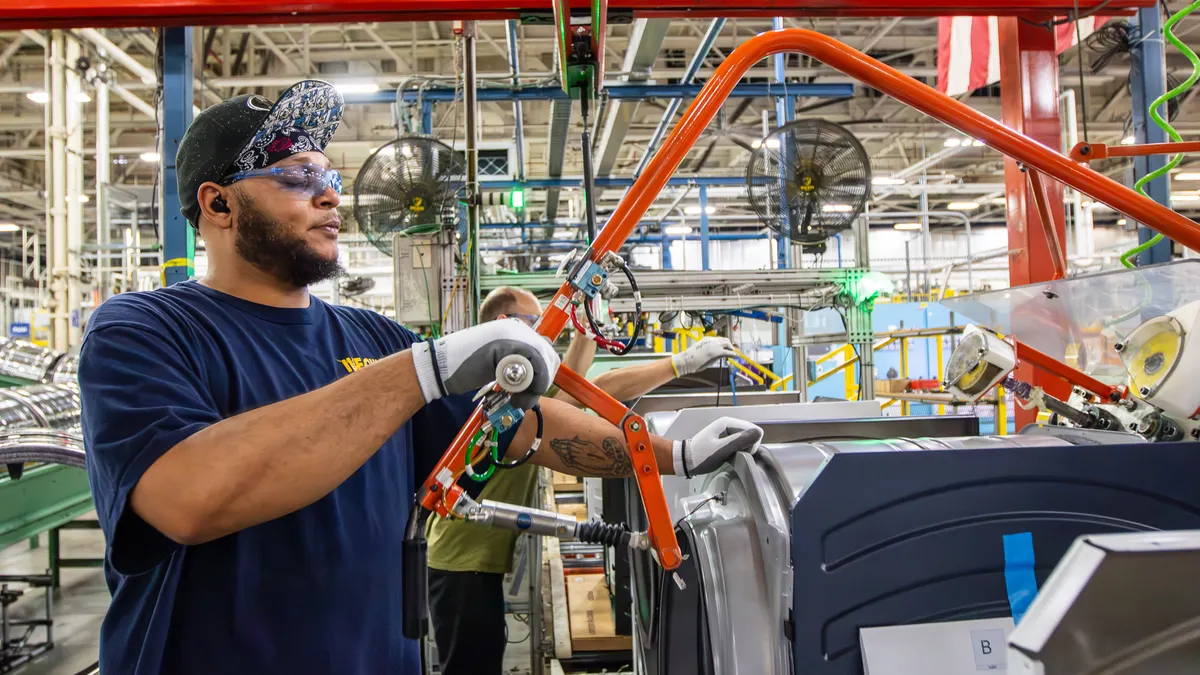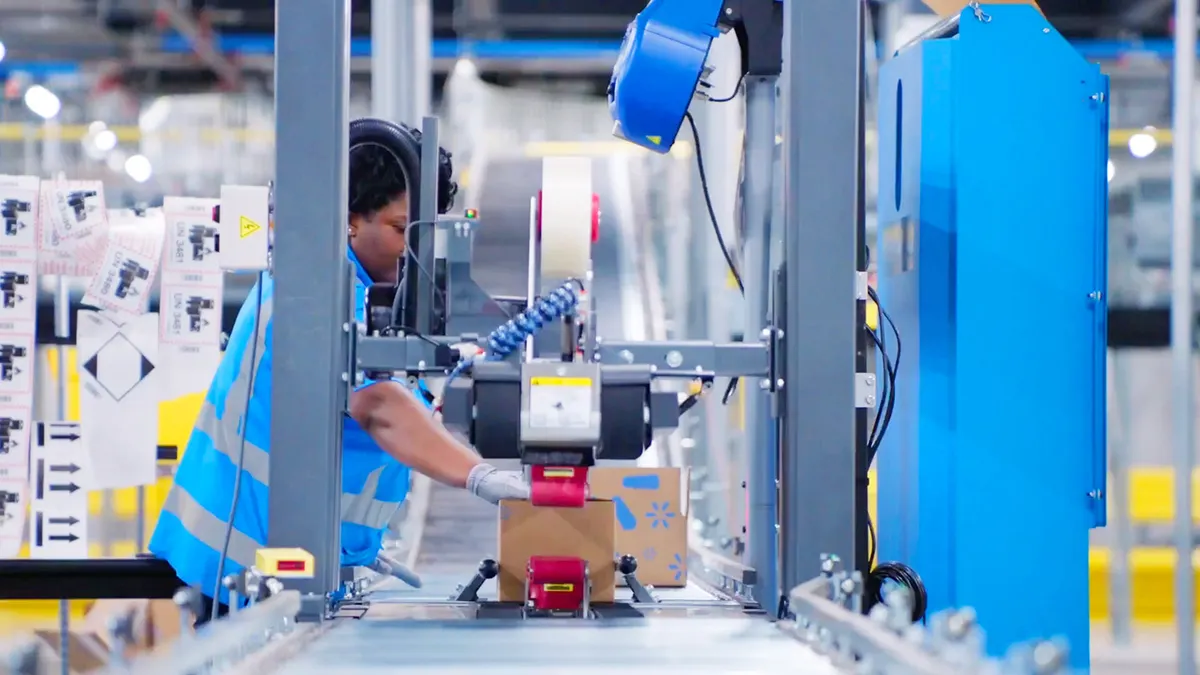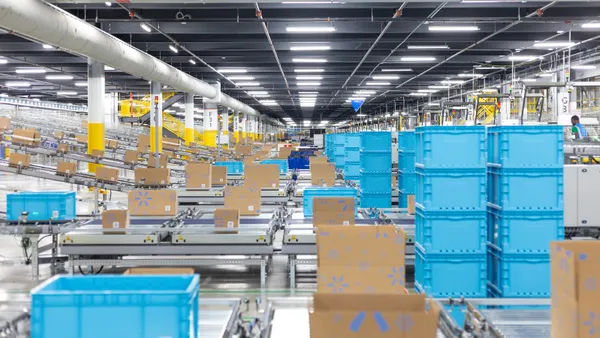From manufacturing plants and distribution centers to store shelves and consumers’ doorsteps, players across the supply chain are looking to automated technologies to boost efficiencies.
A key way to do this, many have found, is to reduce the “human touch” from supply chain operations. Autonomous forklifts, picking robots, RFID tagging technology and conveyor systems are taking root in many warehouses as popular tools to boost efficiency.
But using technology to reduce human interaction may not be enough, Ignacio Felix, a partner at McKinsey&Company, told Supply Chain Dive. In many supply chains, planning remains the bottleneck of a fully automated supply chain.
"Planning encompasses many steps and activities that people have to go through," Felix said. "They also work in different departments, in marketing and sales, in finance, in supply chain, in factories. You really have a lot of manual pass-throughs of the same information."
Legacy IT systems continue to hinder planning processes, as well. Felix said such systems require multiple decisions be made across platforms, slowing productivity.
Planning does not have to be tedious, however. In fact, leveraging data and solutions to rethink supply chain planning processes could help close the gap and create a truly touchless system.
The central planning approach
As part of its effort to build an agile supply chain and data-driven processes, Kraft Heinz created an effort across all departments to improve efficiency.
"We establish transparent and challenging targets and coordinate global KPI tracking, and with a global, end-to-end supply chain perspective, we remove capacity constraints and bottlenecks from the system," Marco Rodrigues, head of Kraft Heinz’s Global Center of Excellence, told investors earlier this year.
The Global Center of Excellence in the Netherlands acts as a control tower to help achieve best-in-class operations. The center shapes the overall vision and direction for digital planning, creates tactical programs and provides critical support for cross-functional collaboration.
"Our view is that every area of an organization has opportunities to improve its efficiency and effectiveness," Rodrigues said during an earnings call. "And no area is off-limits."
Such digital-planning centers can foster innovation, and create a governing infrastructure that develops the right talent and performance management practices.
Using centers of excellence to automate planning
Organizations can use centers of excellence to foster a "test and learn" approach to pilot automation programs, Felix said.
To make automation work, companies must invest in machine learning technologies, advanced analytics and process design. They must also experiment with innovative solutions through an environment of rapid prototyping and iterative development under a governing infrastructure of performance management practices.
These centers can support new ways of working with an infrastructure and environment that helps them "pilot fast, fail fast, and introduce these new skills in your organization," Felix said.
Organizations will also have to consider the positive and negative impacts planning automation can have on their workforce. By eliminating some manual tasks, a company may be able to put workers on more productive tasks and value-added activities.
What supply chain tasks should be automated, according to Felix.
|
Not automated |
Partially automated |
Fully automated |
|
Cross-functional collaboration |
Mid- and long-term S&OP |
Short-term SKU forecasts |
|
Strategic decisions |
Risk management |
Reporting |
"It creates a very interesting way of thinking for the planning process of the future because our roles will have to change," Felix said. "We can repurpose our people more efficiently."
He added decisions about strategy and what to do to when exceptions occur are best not automated. There are things that machines can’t always comprehend, such as the importance of a relationship, what reception a new product may have or even a gut feeling about certain supply and demand issues.
"What we’ve seen is that many of these decisions can be automated in the machine and do it without human intervention and then you have these exceptions where a person needs to intervene," Felix said.
One reason for the bottleneck in supply chain planning is that planning tools and processes weren’t designed with today’s expectations in mind. A large part of supply chain planning still relies on labor-intensive data aggregation, human analysis, and personal judgment.
Data, sensors, and cloud-based solutions can help enable automated planning, but operations managers still face many challenges. Disparate data sources, systems and processes are limiting potential, even as automation takes shape in warehouses. While the supply chain already has much of the data needed to automate these tasks, it’s often in different ERP and software systems. That data needs to be made available everywhere and in a format that can be used across the entire network of factories and distribution centers.
"The data exists, it’s just often of different varieties in different platforms. The exchange of data sometimes works. Sometimes it doesn’t," Felix said.




















